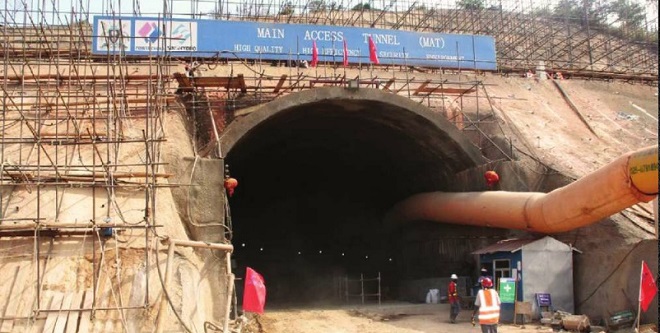Business-as-usual must be challenged if we are going to accelerate the turnaround of Uganda by 2020
COMMENT: By Harrison E. Mutikanga
There is increasing debate within the public domain and in particular the energy sector on whether to continue investing in electricity generation facilities or shift focus to transmission and distribution infrastructure improvement. This article aims to contribute to this debate by providing insight into the electricity demand-supply with respect to meeting the 2020 National Development Plan-NDPII targets.

Uganda currently has 862 MW of installed electricity generation capacity. In his budget speech of June 8, 2016, Matia Kasaija, the Minister of Finance, Planning, and Economic Development, indicated that electricity access is currently at 20.4 % meaning that over 25 million Ugandans have no access to electricity. From the electricity-consumption point of view, Uganda’s situation is far below other developing countries.
The NDP II provides a baseline figure of annual average electricity consumption of 80 kilowatt-hours per capita (kWh per capita) for the financial year 2012/13. This is one-tenth of the consumption in Zambia (767 kWh per capita) and just 2.6% of the global average (3,026 kWh per capita) from the 2013 energy indicators provided by the International Energy Agency report of 2015 on key world energy statistics.
In order for Uganda to attain middle-income status by 2020, the NDP II has set targets for electricity access to 30% and average consumption to 578 kWh per capita. The World Bank has categorised income status based on 2013 global average electricity consumption in five different groups as: high income (9,084 kWh per capita), upper middle income (3,409 kWh per capita), middle income (2,000 kWh per capita), low middle income (1,874 kWh per capita), and lower middle income (745 kWh per capita). From this categorisation, Uganda probably aims to attain lower middle-income electricity consumption status by 2020.
In order to realise these targets, the NDP II projects power generation installed capacity to increase to 2,500 MW by 2020. This means increasing installed electricity generation capacity by 1,638 MW between 2016 and 2020.
Currently there are two large hydropower plants under construction that will be commissioned before 2020, that is, the 600 MW Karuma Project and the I83 MW Isimba project. According to the Electricity Regulatory Authority (ERA), there are five small hydropower projects with a combined capacity of 36.3 MW that are under construction and expected to be commissioned by 2018.
The large and small projects combined will add a total of 819.3 MW of new capacity by 2020. This however falls short of the NDP II target for electricity installed capacity by 819 MW. This clearly shows that there is still need for the government to invest in more electricity generation facilities to close the deficit and ensure sustainable socio-economic development in the next five years.
It’s important to note that the NDP II aspirations of attaining 2,500 MW of installed electricity generation capacity by 2020 would not translate into an average electricity consumption target of 578 kWh per annum per capita by 2020.
It is unlikely that Uganda’s electricity generation goals and consumption targets will be realised in 2020 but it is possible to achieve them by 2025.
The 2014 National Population Census reveals that Uganda’s population was 34.6 million people with an average annual growth rate of 3.0%. Assuming this growth trend remains constant, Uganda’s population will be 41.3 million people by 2020. With an average per capita consumption of 578 kilowatt-hours, and allowing for 18% energy system losses, and a system load factor of 69%, Uganda will require over 4,800 MW in electricity-generation installed capacity.
To attain lower middle-income status (745 kWh per capita) by 2020, Uganda will need 6,200 MW of electricity generation installed capacity. These electricity generation figures are comparable to the target set by the Kenyan government in September 2013 of delivering over 5,000 MW additional installed electricity capacity by December 2016 according to The East African newspaper of June 11-17, 2016. To achieve these numbers, the Uganda government needs to prioritise and fast-track the development of the proposed four cascade hydropower plants along the River Nile, that is, Ayago (840MW), Oriang (392MW), Kiba (288MW), and Murchison (648MW).
It is unlikely that Uganda’s electricity generation goals and consumption targets will be realised in 2020 but it is possible to achieve them by 2025. This could help Uganda align its Vision 2040 with the UN’s Sustainable Development Goals; specifically Goal 7, with a target of ensuring universal access to affordable, reliable, and modern energy services by 2030.
One may be wondering where the 1,638 MW of new electricity-generation capacity in the next five years will be consumed. The government has put in place interventions in the NDP II aiming to harness the opportunities and unlock the huge potential in the agriculture, tourism, minerals, and oil and gas sectors.
The interventions include developing the following energy intensive infrastructure and/or power demand loads to foster economic development: the Standard Gauge Railway (300 MW), Namanve Industrial Park (107 MW), Mukono Industrial Park (90 MW), Luzira Industrial Park (60 MW), Iganga Industrial Park (43 MW), phosphate fertiliser factory in Tororo (200 MW), rural electrification growth (130 MW), urban centres growth (50 MW), power trade through regional grid network interconnection (250 MW), mining (300 MW) and others (100 MW).
These figures have been adopted from the Inter-Institutional Committee on Power Sector Planning Report by ERA, UMEME Annual Report 2015, and estimates based on population growth, electricity connections growths, and unconstrained electricity-demand growth.
Like the proverbial chicken and egg story – what comes first? From the engineering point of view, planning and developing electricity generation plants takes much longer than expanding the transmission and distribution infrastructure and connecting new customers to the grid. In conclusion, the energy sector needs a multi-pronged approach that addresses not only investments in the transmission and distribution infrastructure improvements but also investments to increase electricity generation capacity. Business-as-usual must be challenged if we are going to accelerate the turnaround of Uganda’s stagnated economy and propel the nation to middle-income status by 2020.
Uganda Electricity Generation Company Limited–UEGCL, the government agency with the mandate to develop, own, and operate electricity generation facilities has stepped up its efforts to deliver 783 MW of new generation capacity by 2020. UEGCL will continue to work with the government, development partners, and the private sector under the enhanced Public-Private Partnerships to attract low interest concessional finance in developing new electricity generation facilities.
****
Harrison E. Mutikanga is the Chief Executive Officer of Uganda Electricity Generation Company Limited
****
editor@independent.co.ug
 The Independent Uganda: You get the Truth we Pay the Price
The Independent Uganda: You get the Truth we Pay the Price



